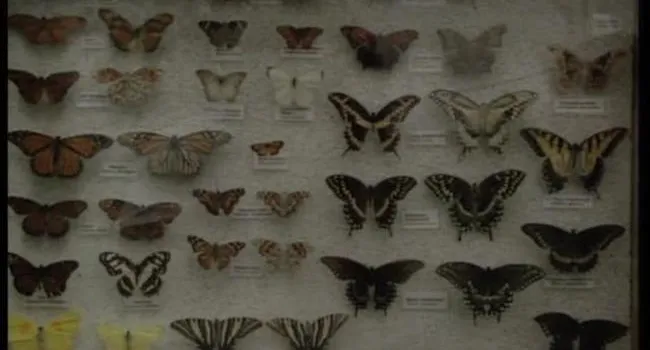The research vessel Palmetto is the largest ship operated by the South Carolina Department of Natural Resources. It is used to monitor offshore marine fisheries in South Carolina, Georgia, North Carolina, and Florida. Grouper and black sea bass are two of the major groups of fish studied by the researchers. The other samples DNR uses include water, bottom, temperature, and pollution samples. Equipment used by the vessel range from traps and hooks and lines to CDT and underwater TV to remotely assess the fish stock. The Palmetto is 112 feet long and 26 feet wide. It carries seven staff members and up to 15 additional scientists for up to 22 days at sea. The 1050-horsepower engine moves the vessel up and down the Atlantic Coast. The captain’s job is to plan the trip, taking into account safety, weather, and navigation. The vessel is in compliance with the Clean Water Act, and does not discharge pollutants into the ocean.
The ocean tells us many things. By monitoring fish populations, including numbers, sizes, rates of growth, ratio of males to females, and maturity levels, scientists can see the direct effects of fishing pressure and provide information for fishing in the future. The method of collecting data is kept consistent so that changes in the populations can be attributed to changes in the environment -- not effects from the study.
CDT is an instrument used on the vessel to measure conductivity or salinity, temperature, and depth. These factors are important to the size of fish populations, and the data collected can be attributed to changes in these variables. Hook-and-line fishing is done to imitate actual fisherman, but the fishermen time their activity so they can calculate a catch per unit of effort ratio. The otolith is an ear stone in fish and is removed in dissection. It has layers that show the age of the fish. More tissue samples are removed to determine the DNA and the place of birth of fish. Eggs in ovaries are observed to determine the time of year of spawn. Some fish are tagged and released. Rewards are given to fishermen who catch these fish and report to DNR. This information reveals migratory patterns and growth rates of the catch.
Standards
- 3.2.2.ER Identify and analyze the ways people interact with the physical environment in different regions of the state, the country, and the world.
- Life Science: Environments and Habitats
- 3.L.5 The student will demonstrate an understanding of how the characteristics and changes in environments and habitats affect the diversity of organisms.
- 3.L.5A The characteristics of an environment (including physical characteristics, temperature, availability of resources, or the kinds and numbers of organisms present) influence the diversity of organisms that live there. Organisms can survive only in...
- 3.L.5B When the environment or habitat changes, some plants and animals survive and reproduce, some move to new locations, and some die. Fossils can be used to infer characteristics of environments from long ago.
- 3.L.5 The student will demonstrate an understanding of how the characteristics and changes in environments and habitats affect the diversity of organisms.
- Earth Science: Changes in Landforms and Oceans
- 5.E.3 The student will demonstrate an understanding of how natural processes and human activities affect the features of Earth’s landforms and oceans.
- 5.E.3A Some of the land on Earth is located above water and some is located below the oceans. The downhill movement of water as it flows to the ocean shapes the appearance of the land. There are patterns in the location and structure of landforms found...
- 5.E.3B Earth’s oceans and landforms can be affected by natural processes in various ways. Humans cannot eliminate natural hazards caused by these processes but can take steps to reduce their impacts. Human activities can affect the land and ocean...
- 5.E.3B.2 Develop and use models to explain the effect of the movement of ocean water (including waves, currents, and tides) on the ocean shore zone (including beaches, barrier islands, estuaries, and inlets).
- 5.E.3B.3 Construct scientific arguments to support claims that human activities (such as conservation efforts or pollution) affect the land and oceans of Earth.
- 5.E.3B.4 Define problems caused by natural processes or human activities and test possible solutions to reduce the impact on landforms and the ocean shore zone.
- 5.E.3 The student will demonstrate an understanding of how natural processes and human activities affect the features of Earth’s landforms and oceans.
- Ecology: Interactions of Living Systems and the Environment
- 7.EC.5 The student will demonstrate an understanding of how organisms interact with and respond to the biotic and abiotic components of their environments.
- 7.EC.5A In all ecosystems, organisms and populations of organisms depend on their environmental interactions with other living things (biotic factors) and with physical (abiotic) factors (such as light, temperature, water, or soil quality). Disruptions...
- 7.EC.5A.1 Develop and use models to describe the characteristics of the levels of organization within ecosystems (including species, populations, communities, ecosystems, and biomes).
- 7.EC.5A.3 Analyze and interpret data to predict changes in the number of organisms within a population when certain changes occur to the physical environment (such as changes due to natural hazards or limiting factors).
- 7.EC.5B Organisms in all ecosystems interact with and depend up on each other. Organisms with similar needs compete for limited resources. Food webs and energy pyramids are models that demonstrate how energy is transferred within an ecosystem.
- 7.EC.5B.3 Analyze and interpret data to predict how changes in the number of organisms of one species affects the balance of an ecosystem.
- 7.EC.5B.4 Define problems caused by the introduction of a new species in an environment and design devices or solutions to minimize the impact(s) to the balance of an ecosystem.
- 7.EC.5A In all ecosystems, organisms and populations of organisms depend on their environmental interactions with other living things (biotic factors) and with physical (abiotic) factors (such as light, temperature, water, or soil quality). Disruptions...
- 7.EC.5 The student will demonstrate an understanding of how organisms interact with and respond to the biotic and abiotic components of their environments.



































